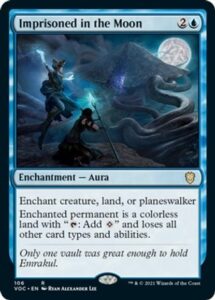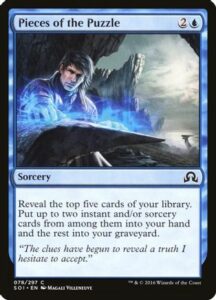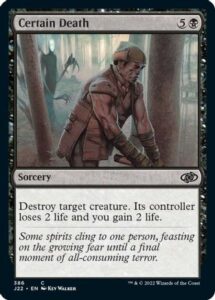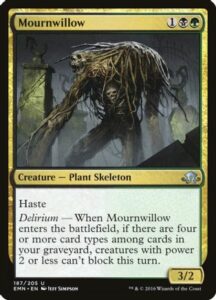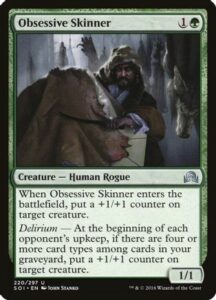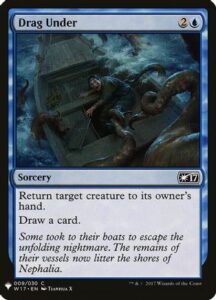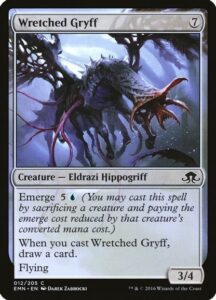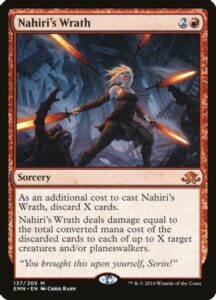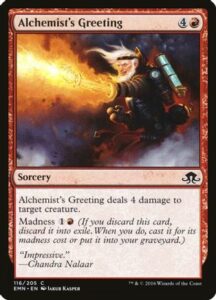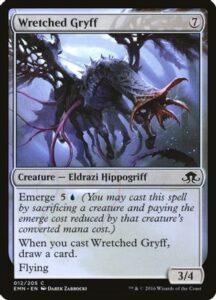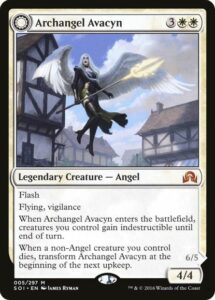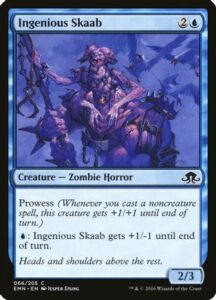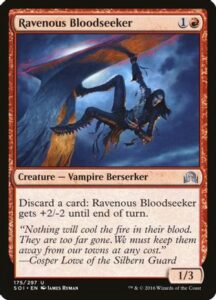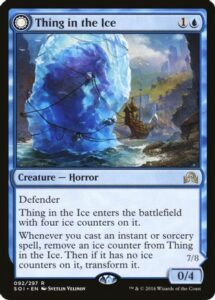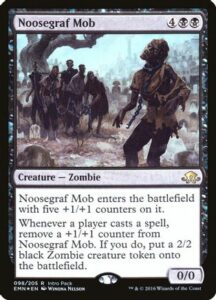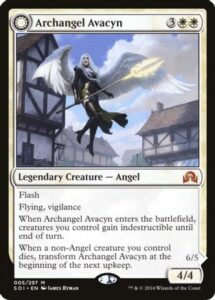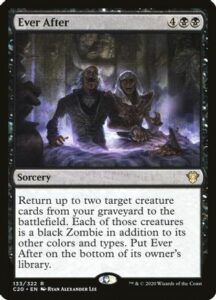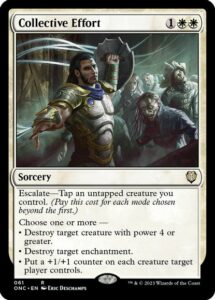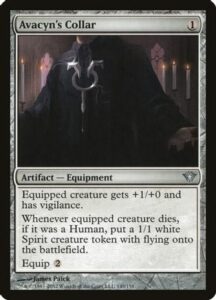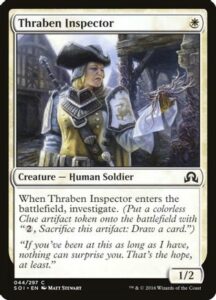Analyzing Siggy’s SIR Draft Decks

This upcoming weekend is the Shadows Over Innistrad Remastered Arena Open. Limited Opens are my favorite events to play in MTG these days, so I decided to prep a little.
I’m glad I did because the remastered version of Shadows Over Innistrad is different and more fun than I remember Limited being.
While the format can be fast, it’s easier to halt aggression. The games turn out grindy. The creature sizing is relatively small, so it’s easier to wall up and use cheap efficient removal to keep the battlefield relatively stable.
Between Investigate, Madness, Tokens, and good-old-fashioned card draw, there are a lot of ways to come out ahead on cards. Combined with the cheap removal, it’s important to find some kind of engine to keep card flow going or risk getting buried in the mid-game.
Additionally, there are a lot of incredibly strong rares because of added slots to a bonus sheet. I’d be lying if I said I knew exactly how this works, but the gist of it is that the bonus sheet will change week to week, meaning some cards you never saw may show up later. This is a pretty cool twist to keep things a little fresher while maintaining the flow of the format.
On top of the moving target rares, there’s also a lot of rarity downshifting that moved rares to uncommon or even common (looking at you Imprisoned in the Moon). In some cases, cards got upshifted in rarity from common to uncommon, like Pieces of the Puzzle and Vessel of Nascency.
I did about a dozen drafts at this point, and I’ve had a stellar win rate, as I seem to get seven wins in virtually every draft. However, I’m climbing ranks, so take that with a grain of salt. I will probably hit mythic by day’s end after writing this, as I’m deep in Diamond and only taking a break to write.
I have a specific set of decks I like to draft, but I’m open to drafting anything. My one rule is to avoid black. Black was always the worst color in this format, and remastering didn’t do it any favors. However, I’m willing to break out of that if I open a really strong rare. One of the main reasons I’m low on black is it’s the worst color for removal in the set. Even blue has better ways to handle creatures in play than black. Black generally has a solid Murder-type card, but in this format we get Certain Death, which is too expensive. Usually I don’t want more than one or zero copies of the card. Black has tons of tokens and ways to grind, but it’s difficult without common removal. Kindly Stranger is probably the best black removal outside of rares, and it requires set-up. When it’s good it’s quite strong, but Derlium is no easy feat unless you’re focusing strongly on that, which is a viable strategy.
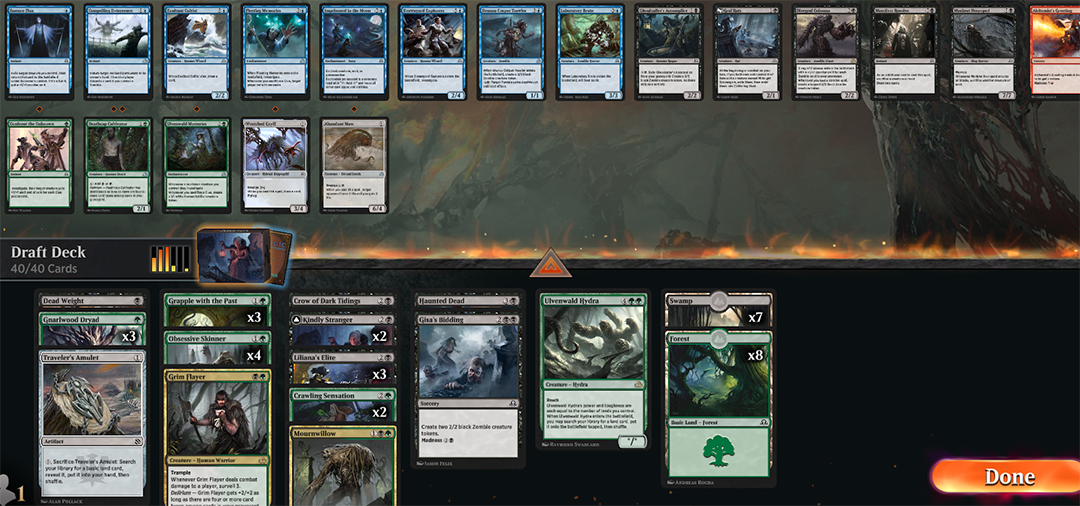
This deck went 7-0 and was quite focused on picking up Delirium. I kept a low curve and played 15 lands thanks to the hand smoother, otherwise I would have cut a creature of some sort, maybe Mournwillow, and added a land. Obsessive Skinner is my pick for most undervalued common, as I constantly wheel them and it’s hard to stop when it gets going. I think people have been fairly good about not drafting black since it seems to be open a lot.
I prefer to be in Temur colors. In fact, UG Clues is a criminally underdrafted deck. The deck is quite strong when you get some key uncommons, and you can generally pick them up late.
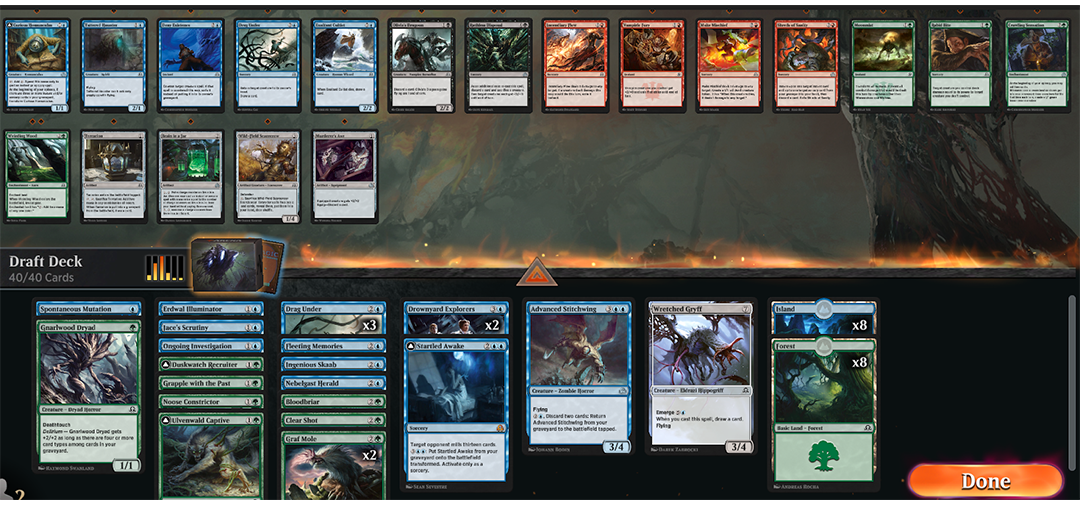
This deck is full on stall and mill. Looking back I would have played the fourth Drag Under over the Wretched Gyff, but I convinced myself to put the Gryff in my deck because I remembered it being very good. It’s not a card I’m a big fan of currently, but I don’t mind playing one in my decks if I need a card.
Drag Under is fantastic, and all this deck wants to do is buy time and set up milling the opponent out with Fleeting Memories, a card you’ll almost always wheel. I’m happy to snap it up early and often and move into this archetype if I think it’s open. Startled Awake is bomb level since it’s so easy to stall out and use to close the game. It’s easy to dig for with all the mill and card draw in the format.
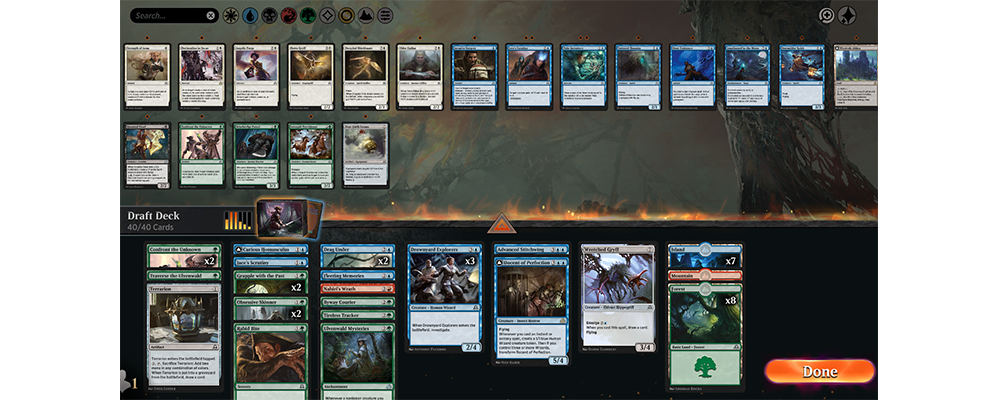
Nahiri’s Wrath is a good reason to play a Gryff, and the card is obscene. I don’t understand why it’s not doing better on 17Lands.com data, but I chalk that up to players using it poorly. It’s much better in decks trying to stall the game and draw cards than decks trying to hit the ground running. Maybe players are drafting red too aggressively whereas I keep a more controlling build.
Regardless, the way I draft UG is to focus on generating value in some form, whether self-mill and getting the most out of Delirium cards or having a focused Clue strategy and payoff, you need inevitability. As I said, it’s easy to get in the form of mill.
My next favorite archetype is UR. Probably the only reason I don’t like it more is that it’s very popular.

This is a weird one and the first time I drafted UR in the format. I opened Thing in the Ice and forced the archetype. While my deck turned out fine, and I got seven wins, I don’t like some of my choices in retrospect. I should have played Jace’s Scrutiny over Harvest Hand for example.
Either way this deck had cheap removal and some tempo plays and just enough card advantage with Pore Over the Pages that we got there. Alchemist’s Greeting keeps moving up in my pick order, as it’s much easier to turn on the Madness than I anticipated initially. Again, the Wretched Gryff looked medium here, but early in the format I remembered it as a strong blue common in Eldritch moon and wanted to continue to try the card.
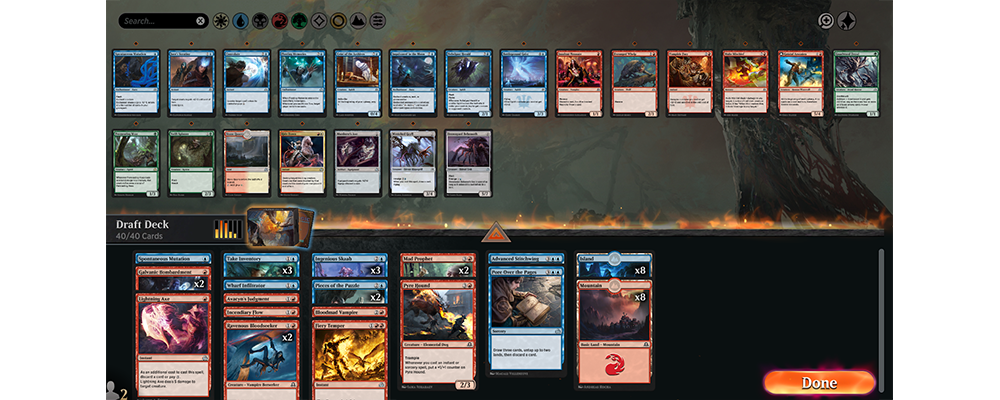
This UR deck is potentially the best deck I’ve drafted in the format because it has so much removal and card advantage. I lost one game with this one to an unchecked Archangel Avacyn. Ingenious Skaab was considered one of the best commons in Eldritch Moon, yet I get them almost last pick repeatedly. While I don’t love the card, it is way higher value than getting it on the wheel, so you can find some value there. Avacyn’s Judgment is more absurd this time around because Madness outlets like Ravenous Bloodseeker got downshifted to common.
The premium uncommon you want to pick up with UR is Rise from the Tides. Rise from the Tides also has a lower win rate than expected on 17Lands.com. My guess is that people are playing it when it’s not good enough and drafting poorly around the card. Draft-around cards will have this effect, which doesn’t mean we shouldn’t draft them, it means we should learn to utilize them better. It’s not a card you want to take p1p1 and force a deck because your deck will end up bad when you get cut. It’s a card to pick up once you find your lane, and it won’t fit into every single deck. An important part of this format is to find your lane first and know which cards are best for that lane, or when you get there, take cards that supplement that plan. If UR is wide open, it’s easy to know which cards to take because it’s a “spells matter” color combo with little other direction to move.
With UG, you can go in a bunch of different directions, so figuring out which pieces you want will be determined by the draft-around you pick up, of which there are many.
The TLDR (too long didn’t read) version: Draft a deck in this format, not just cards.
Having said that, sometimes you have a bunch of strong rares and you can pick up wins off their backs. Here are some example of decks where my rares carried me:

Elder Deep-Fiend, Thing in the Ice, and Noosegraf Mob are all strong rares that if any were replaced by commons it would have severely hurt my deck. I had to make some concessions to my Thing in the Ice to play maximum instants and sorceries, but it did its job when drawn. This deck is bad, but Elder-Deep Fiend is so strong, and I’m able to find it enough that the deck did its job.

This is a deck full of good cards, so it’s not surprising I picked up a bunch of wins here. There’s plenty of removal, a solid curve, and of course, lots of strong rares. Collective Effort and Archangel Avacyn lead the way, but Ever After was nice by providing the ability to grind a little more.
I see Avacyn’s Collar go criminally late, but that may be due to white also being a bit underdrafted. I’m still seeing Thraben Inspectors go seventh and eighth pick far too often. Regardless, I want my white decks to look more like this than tons of cheap bad creatures and combat tricks. Equipment is more valuable because the games in this format seem less about tempo and more about finding ways to break through the stall
In general, my best advice for this format would be to take good rares if you open or get passed them and to not be too picky about colors. Games are long, and you’ll get more wins the better your card quality. In this format, you need to spend mana in early turns, especially against some of the werewolves cards. The games get grindy once you’re able to get into the mid-game without much pressure on you. Have a plan for going long.
At this point, I’ve decided I have too much going on the weekend of San Diego, so I’m going to skip the Regional Championships and focus on online tournaments. There’s an outside shot I get FOMO and book a ticket, but as of now I’m happy to stay home and grind the plethora of online events offered to us, including the Arena Open this weekend. If you’re on the fence about playing it, Shadows Over Innistrad Remastered is a lot of fun and is worth playing.





